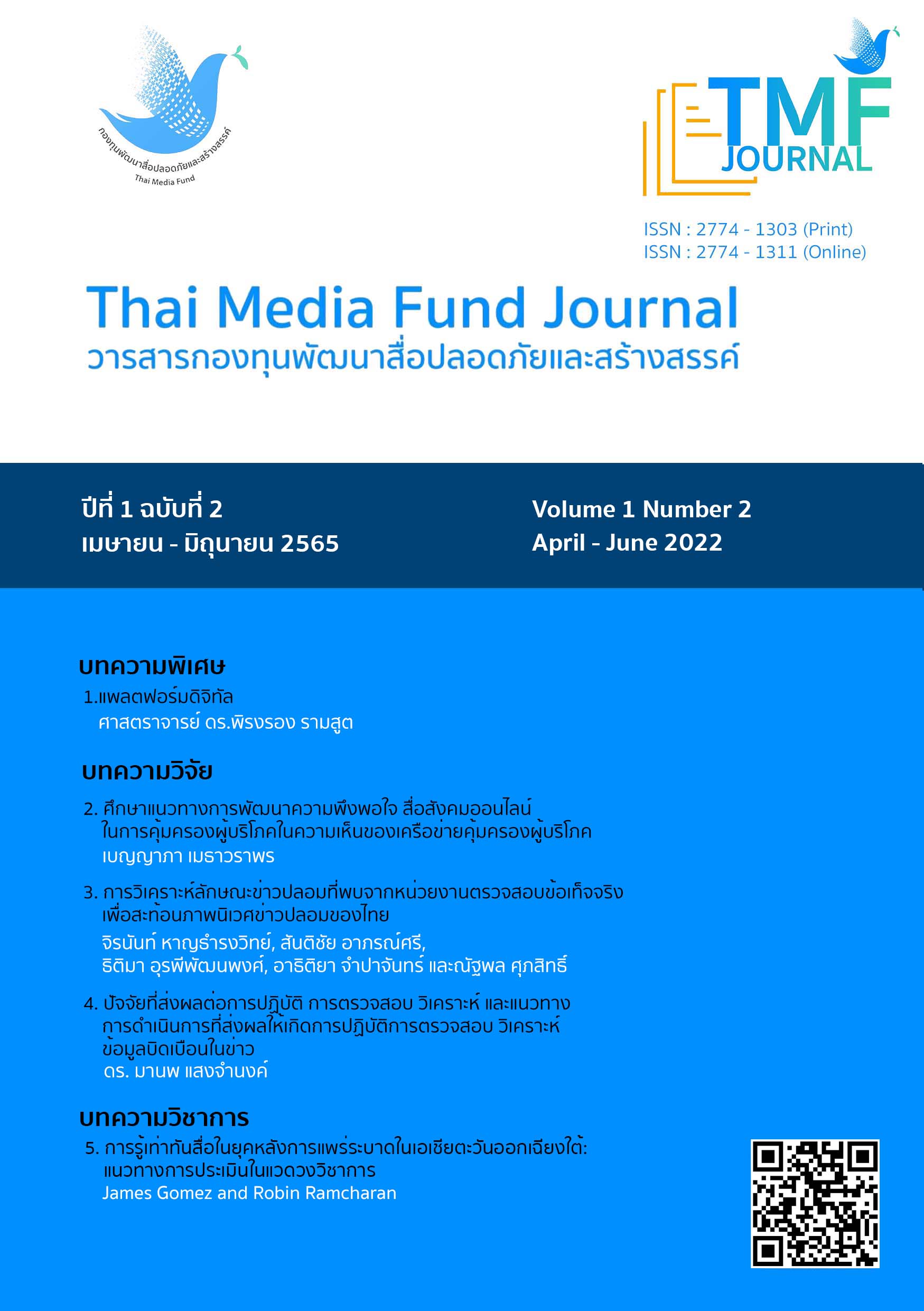Factors Affecting the Practice, Examination, Analysis, and Action Guidelines that Result in the Investigation of Disinformation.
Main Article Content
Abstract
This article presents the results of the study factors affecting the practice, examination, and analysis to find disinformation and action guidelines that resulted in the practice of disinformation of a sample of 482 students. It was found that it was able to forecast the practice, examine, and analyze to find disinformation and could be explained correctly by 55.1% by using factors; (1) news experience that indicates the presence of disinformation and affects how clear, based on the credibility, place, time, and third party it is, if there are unclear and assumed to be distorted data and forecast is 40.4% accurate, (2) news experience in which there is an indicator of disinformation affects the analysis of other anomalies whose elements indicate that disinformation in the news is likely to be predictable with 39.4% accuracy, (3) news experience in which there is an indicator of disinformation affecting the review of websites or other news sources can be predicted with 39.5% accuracy, (4) news experience with indications that disinformation affects the accompanying image can be searched from Tineye whether the image is an old image that has been posted, and if it is used it is a disinformation which able to forecast with accuracy 38.6%, (5) news experience with indications of disinformation in news affecting search engines may also be notified by agencies that verify that misinformation in news can be predicted correctly 32.6%, and (6) news experience with indicators of disinformation resulting in inquiries from trustworthy agencies, such as the Anti-Fake News Center of Thailand, the Centers for Sure Before Sharing Thai News Agency, Able to forecast with accuracy 37.5%. The studied through key indicators including; Publishing purpose, Layout of images and graphics, News sources and citations, Headlines and terms used, News writing style, Censorship and comparison, and Types of news. All abnormalities were statistically significant at the .05 level.
Article Details

This work is licensed under a Creative Commons Attribution-NonCommercial-NoDerivatives 4.0 International License.
References
Anti-Fake News Center Thailand. (2022). Help stop the spread of fake news. Retrieved from www.antifakenewscenter.com
Baptista, et al. (2021). The influence of political ideology on fake news belief: The portuguese case. Publications, 9(23), 1-17.
Chanthawichasut, P. (2019). Investigating fake news. Retrived from www.isra.or.th/news-and-trainnee/756-fakenews.html
ETDA. (2019). ETDA reveals that in 2019. Retrived from www.etda.or.th/ETDA-Revealed-Thailand-Internet-User-Behavior-2019
Inthanon S. (2019). News literacy. Pathum Thani: Walk on Cloud Company Limited.
Jongkitthaworn, K. (2021). The latest research reveals that Thai students are weak about dealing with fake news. Retrieved from www.beartai.com
Kunviroteluck, B., Issadisai, S., & Tubtiang, A. (2020). Factors reducing the spread of fake news on Social Media. Journal of Humanities and Social Sciences, Rajapruk University, 6(2), 196-213.
Mullins, K. (2018). The real story with fake news. Post Library Faculty Publications, 11. Retrieved from https://digitalcommons.liu.edu/post_libfacpubs/11
Phanmool, J., & Propunprom, P. (2021). Situation of media access, fake news recognition and the impacts of media use of
the elderly in urban communities in a new normal. Journal of Legal Entity Management and Local Innovation, 7(8),
-184.
Saengchumnong, A. (2022). Distinguish between real news and fake news and the emergence of operational awareness based on news among undergraduate students. TMF Journal, 1(1),
-79.
Suksomchit, M. (2021). Special article on “Fake News: ข่าวลวง, ข่าวปลอม”. Journal of Journalism, Thammasat University, 15(1), 9-39.
UIH Digital Infrastructure & Sloutions. (2021). What is fake news. Retrived from www.uih.co.th/en/knowledge/fake-news
UNESCO. (2018). Journalism, ‘Fake news’ & disinformation handbook for journalism education and training. Paris; UNESCO.
Waewklaihong, K. (2020). When the media plays the role of fake news producer, media ombudsman revives oversight. Bangkok: National Book Council.
Wannataworn, A. (2021). Ethnography and social media algorithms research. Humanities and Social Sciences Rev., 9(3), 1-14.
Webwise. (2022). Explained: What is false information (fake news)?. Retrieved from www.webwise.ie/what-is-fake-news/


